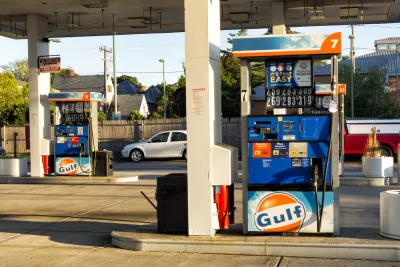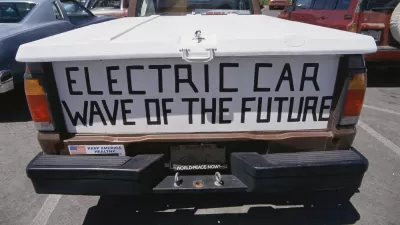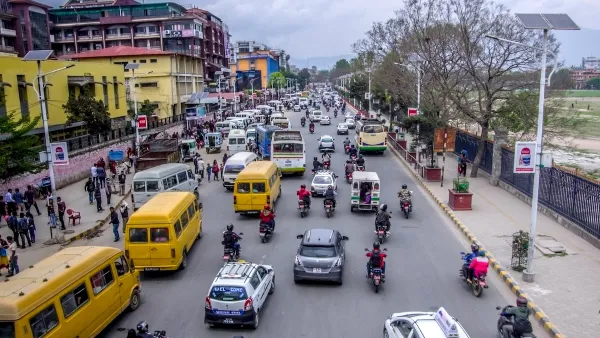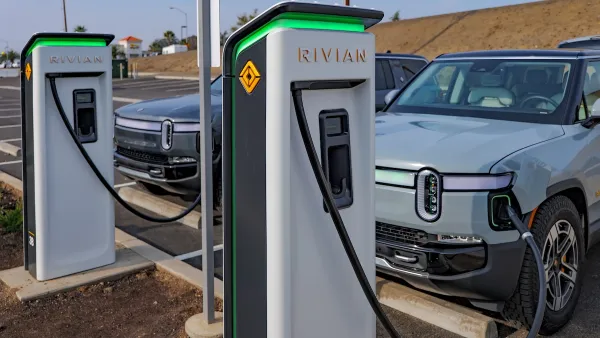The new "50 Steps Toward Carbon-Free Transportation" report examines the gulf between the reality of the U.S. transportation system and the innovations that will be necessary to achieve a carbon-free future.

Tony Dutzik shares new of a new study from the Frontier Group that recommends 50 steps toward carbon-free transportation. The report focuses on the United States, acknowledging that the U.S. transportation system is "Climate Enemy #1."
Dutzik's distillation of the new report includes a lot of quotable facts and illustrative infographics, sure to be of use to those working against the car-centric status quo. For instance, Dutzik includes the following regarding the reality of the U.S. transportation system:
- "Climate change is rarely a factor in transportation decision-making. Only seven states have enforceable, economy-wide limits on carbon pollution, and, as of 2012, the vast majority of states and metropolitan planning organizations did not even consider greenhouse gas emissions in agency planning processes."
- "America spends vastly more on infrastructure for high-carbon modes of travel than low-carbon modes. Between 1956 and 2014, 79 percent of all government capital expenditures on transportation went toward highways, according to Congressional Budget Office data."
- "The federal funding match for new highway projects is generally higher, and the burden of evaluation lower, than major transit capital projects."
Luckily, the report also works from the belief that the United States has the tools to build a carbon-free transportation system, both in policy and in technology. Dutzik lists those tools and explains how each of them can contribute to the cause.
FULL STORY: 50 Steps Toward Carbon-Free Transportation: Rethinking U.S. Transportation Policy to Fight Global Warming

Planetizen Federal Action Tracker
A weekly monitor of how Trump’s orders and actions are impacting planners and planning in America.

The Simple Legislative Tool Transforming Vacant Downtowns
In California, Michigan and Georgia, an easy win is bringing dollars — and delight — back to city centers.

San Francisco's School District Spent $105M To Build Affordable Housing for Teachers — And That's Just the Beginning
SFUSD joins a growing list of school districts using their land holdings to address housing affordability challenges faced by their own employees.

In More Metros Than You’d Think, Suburbs are Now More Expensive Than the City
If you're moving to the burbs to save on square footage, data shows you should think again.

The States Losing Rural Delivery Rooms at an Alarming Pace
In some states, as few as 9% of rural hospitals still deliver babies. As a result, rising pre-term births, no adequate pre-term care and "harrowing" close calls are a growing reality.

The Small South Asian Republic Going all in on EVs
Thanks to one simple policy change less than five years ago, 65% of new cars in this Himalayan country are now electric.
Urban Design for Planners 1: Software Tools
This six-course series explores essential urban design concepts using open source software and equips planners with the tools they need to participate fully in the urban design process.
Planning for Universal Design
Learn the tools for implementing Universal Design in planning regulations.
Smith Gee Studio
City of Charlotte
City of Camden Redevelopment Agency
City of Astoria
Transportation Research & Education Center (TREC) at Portland State University
US High Speed Rail Association
City of Camden Redevelopment Agency
Municipality of Princeton (NJ)





























